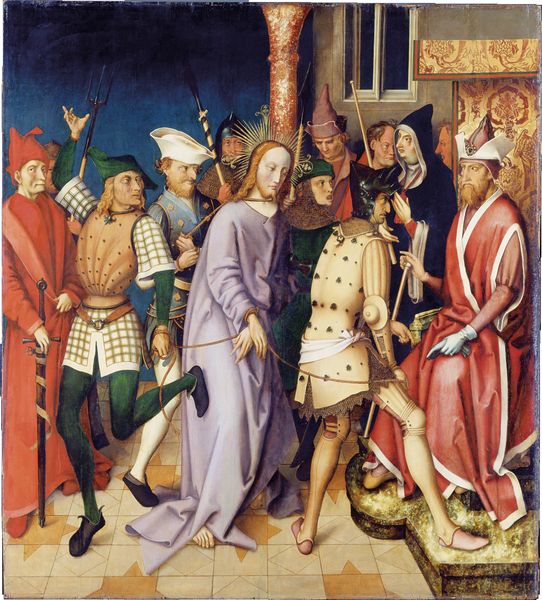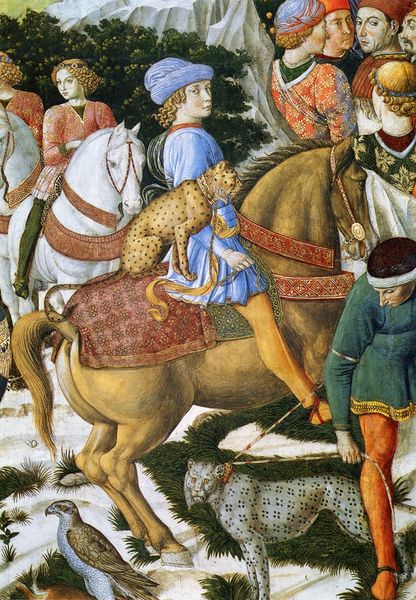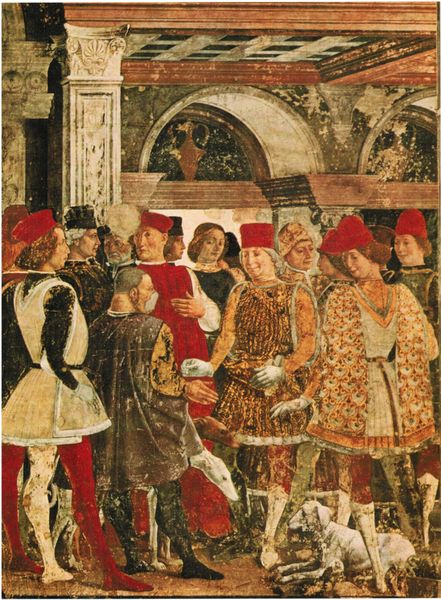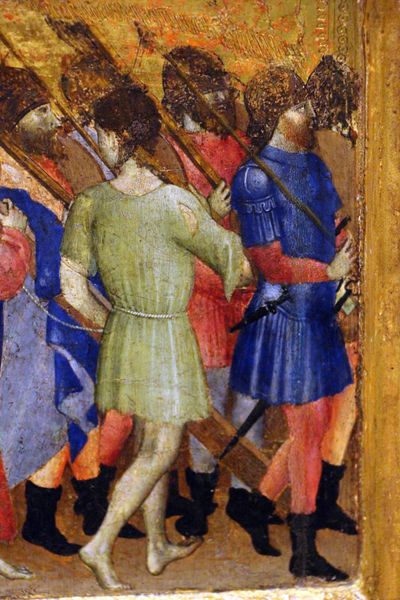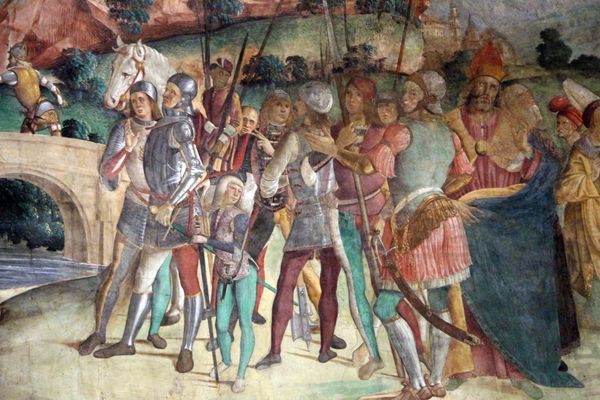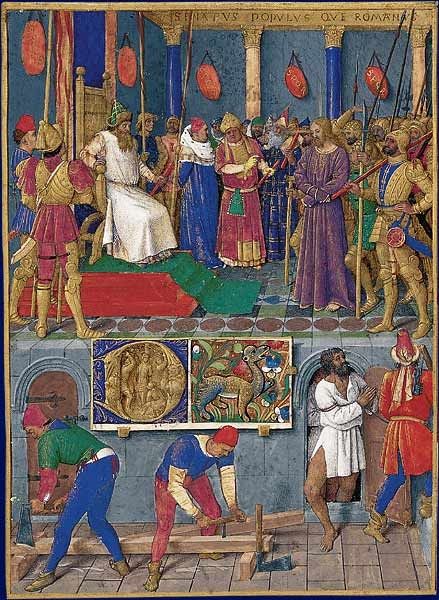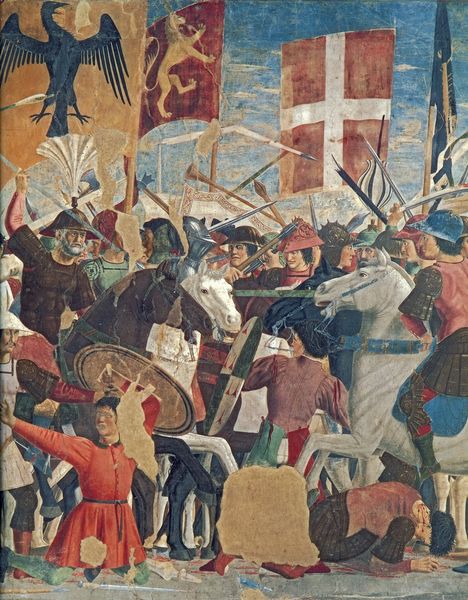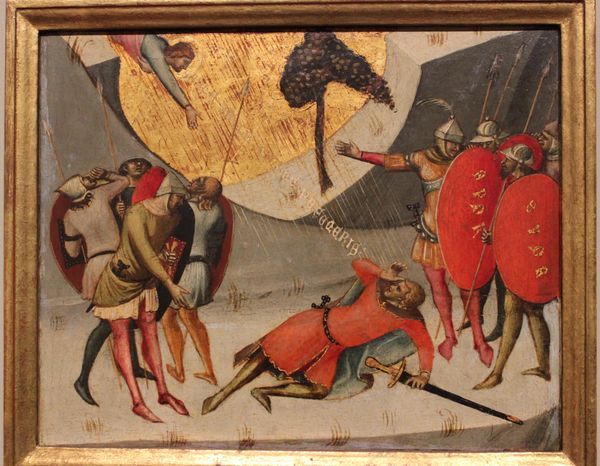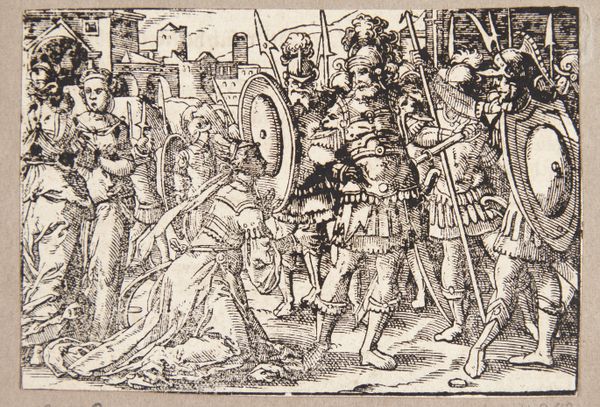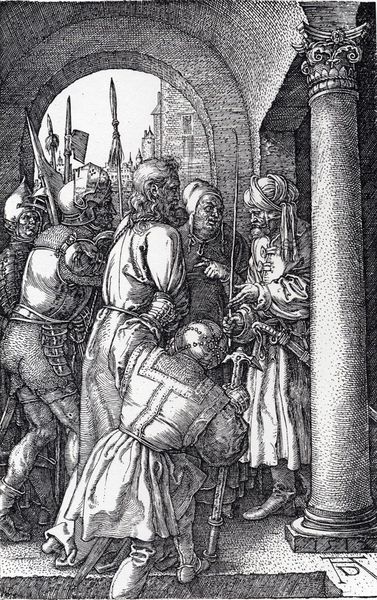
tempera, painting
#
narrative-art
#
tempera
#
painting
#
figuration
#
history-painting
#
italian-renaissance
Copyright: Public domain
Jean Fouquet created this panel around 1452-1460, most likely with tempera and oil on wood. Look closely, and you'll see how the artist captured the textures of different materials, from the roughspun cloth of the executioners' tunics, to the glassy surface of the cleric’s blue robe. These details weren't just aesthetic choices. Fouquet, as a court painter, was certainly aware of the socio-economic forces at play. The crispness and detail he achieved would have required many layers of translucent glazes, a time-consuming process. But he was also demonstrating the power of his patron to afford such a costly endeavor. The sharp contrast with the more brutal aspects of the scene is striking. The ropes, the wooden implements, the clothing – all speak to the daily lives of ordinary people, even as the subject matter elevates it to the realm of religious narrative. In the end, Fouquet’s mastery lay in his ability to weave together the earthly and the divine through the careful application of his materials.
Comments
No comments
Be the first to comment and join the conversation on the ultimate creative platform.
